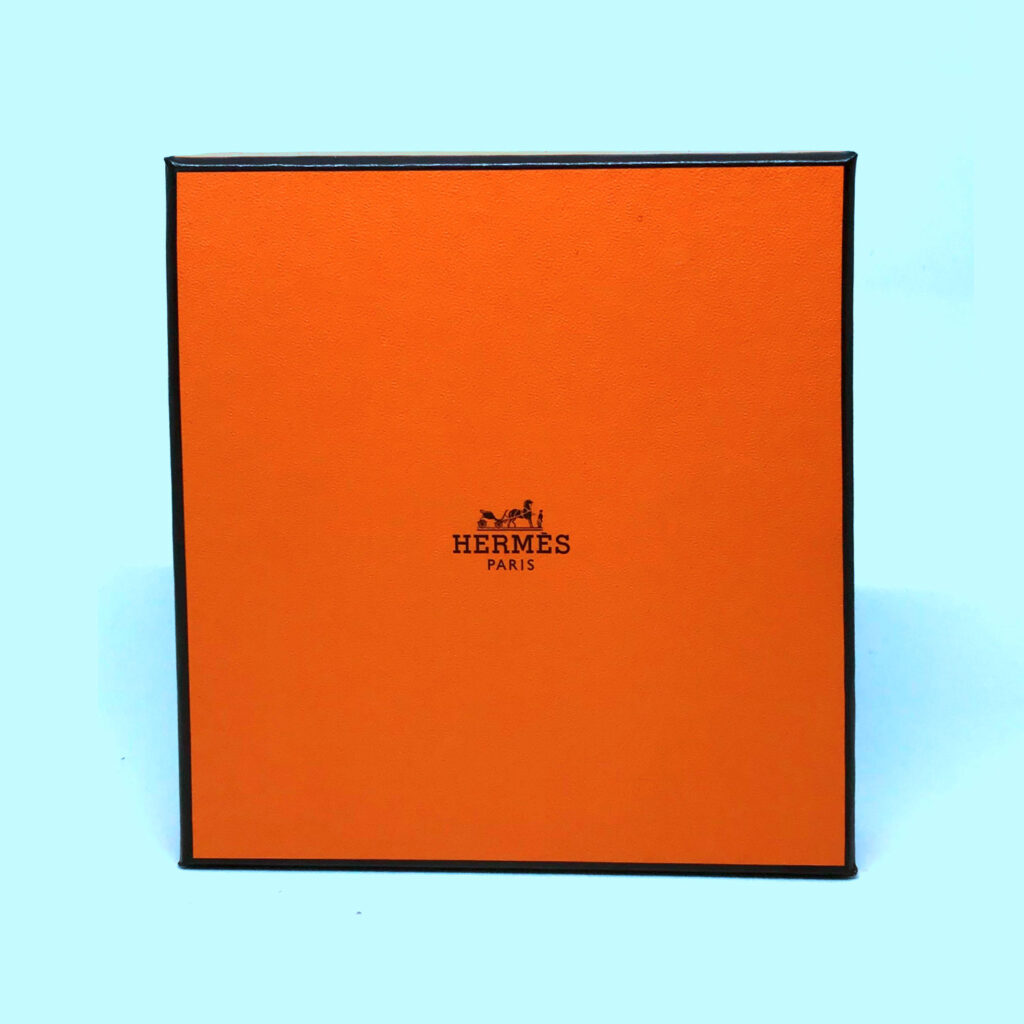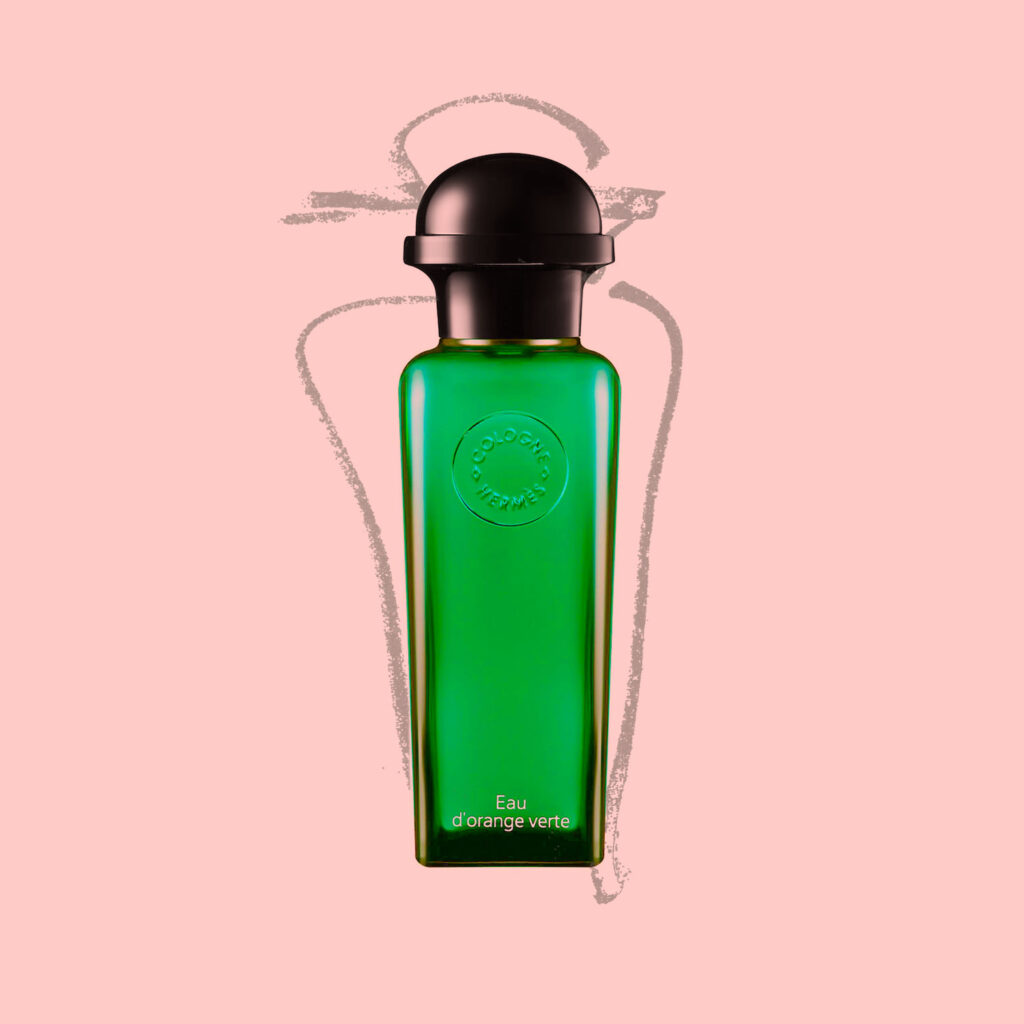Founded in 1837, but entered perfumery only in 1951. The house didn’t have an in-house nose until 2004, when it hired Jean Claude Ellena to be responsible for creating all the house’s new perfumes, as well as giving a unified feel to the perfumes that have been put out until that point. Under Ellena, the perfume sales tripled, and looking at his profile and the recognisability of his creations now, it probably been one of the most successful partnerships of all time. Since 2013, Christine Nagel took over his place, with, at least in my opinion, limited success.
Up to Ellena’s arrival, the scents were created by different established perfumers. Roudnitska, who taught Ellena, created Eau d’Hermès in 1951 to capture the smell of a Hermès handbag. This scent somewhat sets the tone for the next fifty years of Hermès, with Equipage (1970), Bel Ami (1986) and Rocabar (1998) all following suit in that they are elegant and restrained, leathery, complex, masculine scents.

Eau d’Hermès is very much a child of its history, with a strong urinous opening giving you more the idea of a horse than of a handbag (pissy leather). Equipage (1970) was created by Guy Roberts, who is known for his varnish-y style; whose isobutyl quinoline opening gives it a leathery impression, too, but then moves into a more Mediterranean fougère mix (herbed leather). Bel Ami (1986) smells like nostalgia for the perfumes of the 1920s; created by Sieuzac as slightly gourmand carnation chypre (romantic leather).
This leaves Rocabar (1998), which is the creation of Ellena and two other parfumers; and marks the turn for Hermès. Instead of leather, we are now getting a waxy juniper fougère as would be expected for this time; the French answer to Polo.
Ellena then created Terre d’Hermès in 2006, which was one of the most successful perfumes: a hesperidic patchouli with a mineral dust underpinning. For me, this marks the transition from the romantic, complex scents of pre-Ellena Hermès, and the likeable, transparent, citrus-led scents that came after.

Most iconic of Ellena’s style in Hermès is the series of the coloured citrus fruits and flowers: Orange Verte (1979, and updated in 2009 by Ellena), Gentiane Blanche (2009), Narcisse Bleue (2013), Mandarine Ambré (2013), Pampelmousse Rose (2009). They all are extremely transparent, vibrant, fresh; but only add so much to the main note to not be banal, with very little complexity.
It a way, I guess this is also part of Hermès success, the perfumes that Ellena put out are genius in their clarity and recognisability, but I can’t imagine wearing any of those for a romantic date.
There’s also a Hermessence line, in which only one or two few key notes are put in the foreground; like Vetiver Tonka (2004), which I found a good way to portray vetiver’s gourmand side, or Osmanthe Yunnan, which revolves around dry apricot and freesia; and a Jardins line, which hosts aquatic creations like Jardin Sur Le Nil (2005, som tam and pickled cucumber) or Jardin Du Monsieur Li (2015, brief kumquat flash followed by watery cucumber).

In an interview, Ellena likened his scents to haiku, where very few words create whole sceneries. In my opinion, his scents are not that evocative; I can’t find the emotional resonance that would create such sceneries.
From Christine Nagel’s work I have only smelled Citron Noir, which thankfully has the lack of endurance of an Ellena scent that gives swift relief from the insulting citrus window cleaner smell that it is.
All in all, massively interesting house, since it depicts the tastes of the time quite accurately and has scents from most important perfumers. Personally, I like Bel Ami the most, but in a way, it is also the least representative smell of what is otherwise a collection marked by detached elegance.
